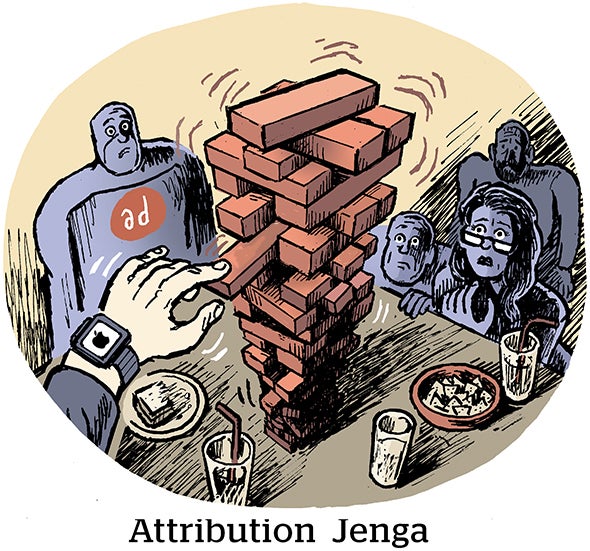MANY INDUSTRY VETERANS say mail is holding its own when it comes to reaching consumers. But gone are the days of extensive testing, mass scattershot campaigns and four-page letters.
“I was talking to a client recently who said that even a one-page letter was too long,” says Emily Soell, vice chair/creative director worldwide at DraftWorldwide.
Whether their direct mail copy amounts to a paragraph or a novel, DM firms are obviously investing in the medium. According to the Direct Marketing Association, in 1998 direct mail spending came to about $39.3 billion, or a quarter of total DM costs. In comparison, 38.1% of DM spending was on telemarketing. And online marketing-now only a small fraction of expenses-is gaining fast.
This means that direct mail campaigns need to be targeted more precisely than ever before. Panasonic’s videoconferencing division did just that with a lead-generation mailing last year, got a whopping 21% response from courthouses in New England-and cut its overall marketing bill by $78,000.
The campaign’s reliance on database marketing technology represented a complete departure from Panasonic’s prior strategy of more costly large-scale prospect mailings. Because of the effort’s success, its strategy of coupling direct mail with a telemarketing follow-up has become a model for the division, says Panasonic national marketing manager Frank Fish. In fact, a new effort to promote video security systems to banks, hospitals and other businesses has already generated an 8% response rate from new leads.
At lettershop Antares ITI in Hauppauge, NY, sales and marketing vice president Steve Hertz confirms this movement toward more precise targeting and segmentation among his clients.
“It’s getting to the point where it’s down to the individual level,” he says.
Hertz cites a major telecommunications client which sends welcome mailings to new residents with information on what types of cable they have in their new house or apartment and the cable services available based on how the home is wired.
“Traditionally, phone companies would just send out the same messages to everybody,” he says.
Another area where mail always has been dominant, magazine subscription marketing, has eroded in recent years. “Direct mail has been declining among publishers for getting new subscribers for five to 10 years now,” says Dan Capell, president Capell’s Circulation Report. “It’s been replaced by telemarketing.”
Overall, subscription-building mail has declined from about 20% of the prospecting effort five years ago to less than 15% now. Part of the problem, says Capell, is that people are loath to write credit card numbers on mail pieces but have no problem giving them over the phone. A more important factor is cost. Capell notes publishers most always lose money on prospect mailings but not on telemarketing.
Another reason for this decline stems from alleged or perceived fraud on the part of magazine stamp sheet mailers American Family Publishers and Publishers Clearing House. Recent Federal Trade Commission actions against those companies haven’t helped matters either.
Magazine and book publisher Meredith, Des Moines, IA, has been moved away from sweeps to a more “editorial sell,” in its direct mail efforts, says creative services vice president Ellen de Lathouder. Ladies’ Home Journal for example, traditionally the most sweeps dependent of all Meredith titles, has given up sweeps and plans to largely increase its editorial-based mailings between this July and June of 2000.
The editorial tactic has worked for the publisher. A recent creative package for Golf for Women magazine that pictures a woman making a triumphant shot and a man looking on in the background, beat old control package by 35%.
These packages all went through the usual battery of testing, formerly something no mailer would ever neglect. “I would say magazines are the only ones still testing so much because so much of their marketing is still done by mail,” says DraftWorldwide’s Soell. “In the old days magazine would even test different colored envelopes.”
While major agency clients like American Express and Bell Atlantic still test their mailings, non-traditional DMers like Procter & Gamble don’t test mail because they see mail as just another selling medium and aren’t necessarily sold on its benefits, says Soell, noting mail has to compete with telemarketing and DRTV.
A few years ago The Reader’s Digest Association the worldwide publisher told DIRECT it had cut back on testing because it wanted to get mailings out the door as quickly as possible. But now the Pleasantville, NY-based firm is apparently back to testing its mail packages more regularly, according to spokeswoman Donna Pierpont. And even though Reader’s Digest is exploring DRTV and Web marketing, mail will continue dominate its efforts.
De Lathouder says Meredith is also exploring the Web, which is starting to have an effect on even some of the most entrenched mailers. Although it still relies on mail for the bulk of its fundraising, the American Diabetes Foundation has found great initial success with online marketing, says direct marketing fundraising director Joanne DelGiorno.
The allure of the Web is obvious. While the foundation received only about $500,000 of its total $18 million in 1998 donations through the Web, individual donations online made by credit card were often close to $100. Mail, notes DelGiorno, tends to bring in the smaller gifts of $15.
But the foundation still scores big with mail: recent survey mailings got 12.71% response rate from diabetes sufferers, 9.15% from people with affected family members and 5.34% from unaffected donors.
The volume of credit card marketers in the mail is reaching historic proportions. According to market research firm BAIGlobal, Tarrytown, NY, prospect mailings for credit cards jumped 15% last year to 3.45 billion pieces although the number of mail-generated applicants didn’t change significantly from the previous year. And in 1998, card issuers upped their solicitations to 75% of U.S. households from 69% of them in 1997 and selling to more segments of the population.
Will mail continue to hold its sway in the coming years?
Many would like to think so. Gene Del Polito, president of the Advertising Mail Marketing Association observes that, despite the rush to electronic media by traditional catalogers like Lands’ End and the ascendancy of such Web businesses as Catalog City, “The Postal Service still has its place in the world because nothing else can reach every mail box in the US.”
But it might not be the same. “Young people are just not interested in mail as a response medium,” says direct marketing consultant Joan Throckmorton who along with Soell isn’t too sure what will happen 15 years when today’s computer-intensive teenagers have serious buying power.
“It will be interesting to see how mail get coupled with e-mail” and other electronic media,” says Frank Salerno, president of River Communications, a Ridgewood, NJ advertising agency. But, he warns, don’t get too tangled up in the technology. “The more mail changes the more it stays the same.”



